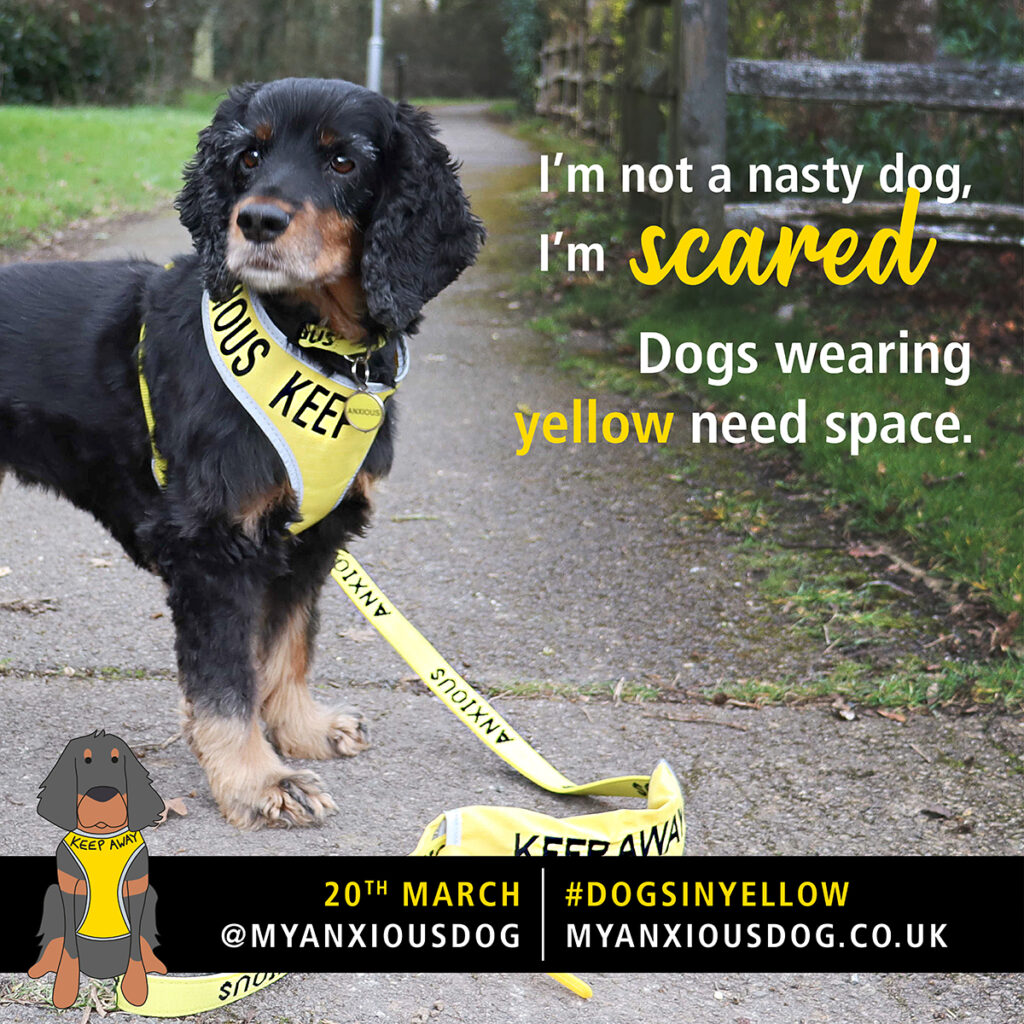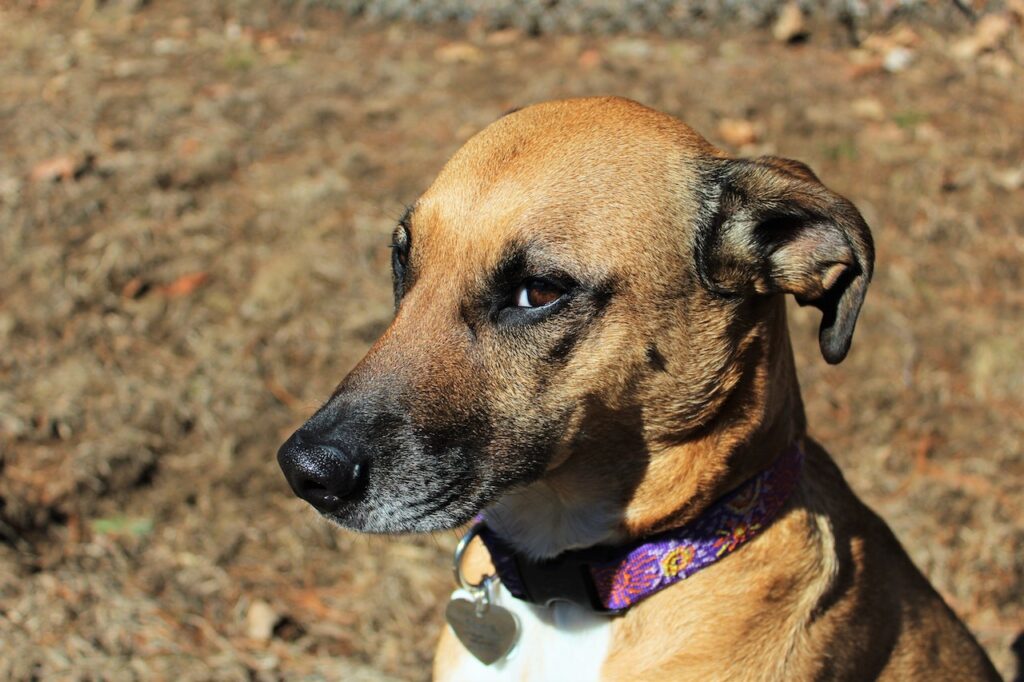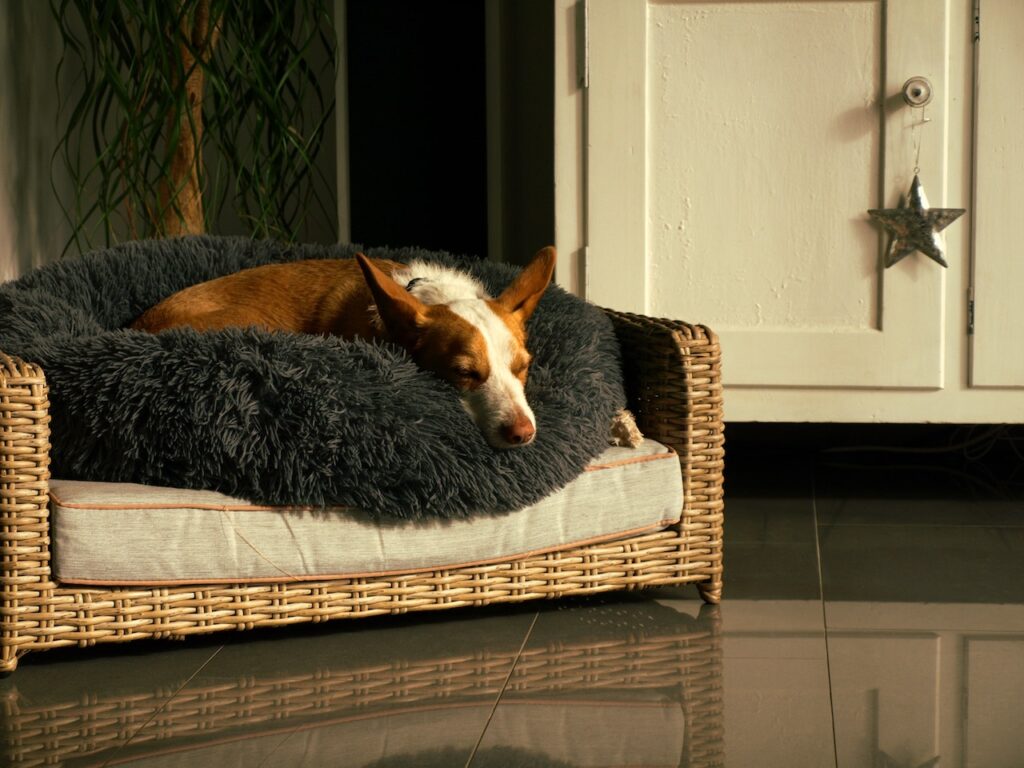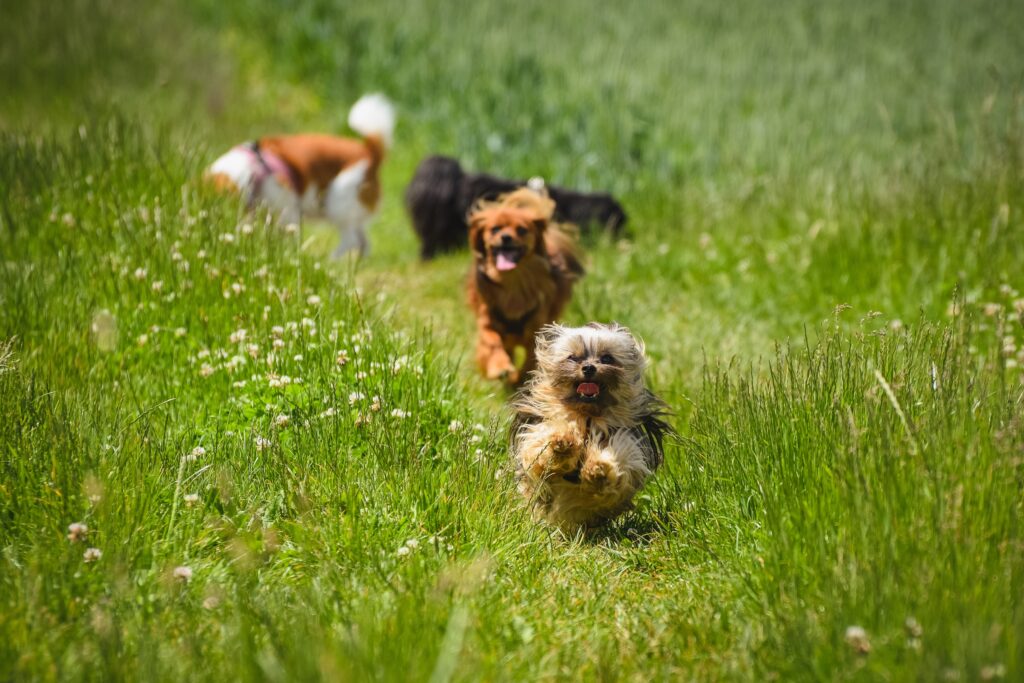Understanding Dog Anxiety
Dogs are known for their unwavering loyalty, boundless energy, and loving nature. However, just like humans, they can also experience anxiety, a complex and often misunderstood condition. Canine anxiety can manifest in various ways and significantly impact a dog’s overall well-being. By gaining a better understanding of this invisible struggle, we can provide our dog friends with the support and care they need to live happier, more relaxed lives.
In this article we investigate the world of dog anxiety by exploring the causes and impact of anxiety / the signs of an anxious dog / how to support and manage an anxious pup and potential treatment options.
The causes and impact of dog anxiety
Canine anxiety can stem from various causes ranging from genetics and early life experiences to environmental factors and even traumatic events. The impact of anxiety on a dog’s mental and physical health can be significant to its overall quality of life as well and this in turn affects the owner and their quality of life. Following is a list of possible causes of dog anxiety…
Genetic Predisposition and Breed Traits:
- Certain dog breeds are more prone to anxiety due to genetic predispositions.
- Breeds with high energy levels or sensitive temperaments may be more susceptible to anxiety.
- Understanding breed-specific traits and tendencies can help identify triggers.
Early Life Experiences and Socialisation:
- Lack of proper socialization during the critical developmental period can contribute to anxiety. The Covid pandemic and it’s lockdown didn’t help in this matter.
- Traumatic experiences, abuse, or neglect in puppyhood can leave lasting emotional scars.
- Separation from the mother and litter-mates at a too early age can lead to separation anxiety.
Environmental Factors:
- Changes in the environment, such as moving to a new home or the introduction of new pets, can trigger anxiety.
- Loud noises, including thunderstorms, fireworks, or building construction, can induce anxiety in dogs.
- Chaotic or unstable living conditions can create a sense of insecurity and contribute to anxiety.
Traumatic Events and Phobias:
- Dogs that have experienced traumatic events, such as accidents or physical attacks may develop anxiety.
- Phobias, such as noise phobia or fear of specific objects or situations can intensify anxiety symptoms.
- Repeated exposure to triggering events can reinforce anxiety responses.
Separation Anxiety:
- Dogs can experience separation anxiety when left alone or separated from their owners.
- Previous abandonment or a history of being rescued and rehomed can contribute to separation anxiety.
- Lack of proper training and gradual acclimatization to being alone can exacerbate separation anxiety.
The overall impact of anxiety can lead to physical symptoms including stomach issues, changes in appetite and skin conditions. Anxiety may also manifest as excessive barking, destructive behaviours and / or aggression. Sadly an anxious dog can be in a constant state of unease and this can strain the bond between the owner and their dog friend.
The Signs of an Anxious Dog
Behavioural Signs of Anxiety in dogs can manifest in some of the following ways:
- Excessive panting, pacing or restlessness.
- Excessive barking, whining or howling.
- Increased trembling, shaking or shivering.
- Destructive behaviours such as chewing furniture or digging.
- Attempts to escape or hide in confined spaces.
- Aggressive or fearful reactions towards people or other animals.
- Excessive drooling or lip licking.
Changes in Body Language:
- Tucked tail or low tail carriage.
- Ears pinned back or flattened against the head.
- Dilated pupils or wide-eyed expressions.
- Hunched or lowered body posture.
- Submissive or appeasing behaviours such as crouching or rolling onto their back.
- Excessive yawning, lip licking or nose licking.
Avoidance or Withdrawal:
- Attempts to hide or seek isolation.
- Reluctance to engage in activities or interact with people or other animals.
- Avoidance of certain environments or situations.
- Loss of interest in previously enjoyed activities or toys.
- Decreased appetite or changes in eating habits.
Physical Symptoms:
- Excessive shedding or hair loss.
- Changes in skin condition such as dryness, flakiness or hot spots.
- Digestive issues including diarrhea or constipation.
- Excessive drooling or excessive grooming.
- Changes in sleep patterns such as insomnia or restlessness.
Changes in Routine and Habits:
- Loss of bladder or bowel control (in extreme cases).
- Changes in appetite either increased or decreased.
- Excessive or obsessive behaviours such as excessive licking or tail chasing.
- Changes in vocalisation patterns such as increased or decreased vocalisations.
Triggers and Context:
- Identifying specific triggers or situations that consistently elicit anxious responses.
- Noting the duration and frequency of anxious behaviours.
- Observing if there are particular environments or people that induce anxiety.
- Recognising if certain events or experiences are associated with the onset of anxiety symptoms.
Anxiety in dogs can manifest through a range of signs and behaviours that may be subtle or more pronounced. By understanding these signs, pet owners can better identify when their beloved companions are experiencing anxiety and provide appropriate support and care. It’s essential to remember that each dog is unique, and their anxiety may present differently. With patience, empathy, and professional guidance, we can help our anxious dogs lead calmer, happier lives.
How to support and manage an anxious dog
It is really important to create a safe and comforting environment for anxious dogs, help build resilience with positive reinforcement and reward based training. Exercise, mental stimulation and routine are all things that can reduce anxiety as well as seeking professional help and guidance from vets and animal behaviourists. We are also proud to be a product partner with an amazing company..
‘My Anxious Dog‘ is a dog community that provides dogs and their owners with yellow space products awareness accessories so that when out in public they can display different warning message to increase visibility of their individual needs.
They provide a range of accessories for anxious, nervous and reactive dogs make it easier to enjoy walks with your best friend.
As awareness continues to grow, more and more members of the general public now know that if they see a dog wearing yellow, they need space.
We are proud to be supporters of the #dogsinyellow movement.

HOW DO YELLOW ANXIOUS DOG PRODUCTS WORK?
They produce products with warning message to suit all dog needs including Keep Away, anxious, do not touch, and keep dogs away. Messaging is embroidered on both sides rather than printed, so it doesn’t fade and can be seen from every angle.
Products available on the website include…
- Collars, Leads & Harnesses
- Clothing for owners – Hoodies, walking bags, poo bag holders
- Accessories such as warning slips for leads, car stickers
- Accessories for dogs – raincoats, jumpers
Potential Treatment options
Treatment options for anxiety in dogs may also include behavioural training, environmental modifications and medications, including CBD. There are also holistic approaches to canine anxiety, the benefits of natural remedies, such as aromatherapy and herbal supplements should also be considered and we will cover this in other blog articles coming soon.
Understanding and addressing canine anxiety is essential for ensuring the well-being and happiness of our beloved dogs. By recognising the signs, seeking appropriate treatment and creating a supportive environment, we can help our dog friends overcome their anxieties and lead fulfilling lives. Remember, empathy, patience and a holistic approach are key in supporting dogs suffering from anxiety. With our commitment and love, we can make a significant difference in their quality of life, offering them the peace and tranquility they deserve.





